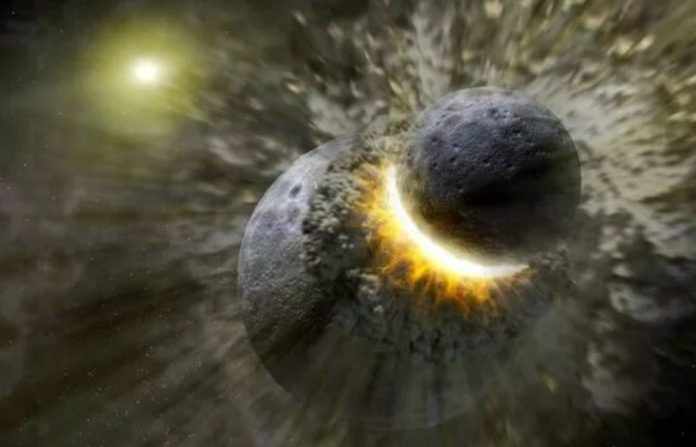The existence of two continent-sized enigmatic blobs hidden inside Earth’s core has perplexed geologists for decades.
A new study could shed light on the origins of the anomalies, implying that they may be the result of a cosmic collision. These huge blobs, known officially as Large Low-Shear-Velocity Provinces (LLSVPs), are each the size of a continent and 100 times taller than Mount Everest. To date, scientists have only a vague understanding of what these blobs are and why they exist.
These anomalies, according to a team of researchers, are the remains of Theia, a protoplanet that collided with the Earth 4.5 million years ago, resulting in the development of the Moon.
For decades, seismologists have been baffled by these blobs that reside beneath West Africa and the Pacific Ocean. “if these things are truly ancient, it tells us something about how our planet formed,” said Sujoy Mukhopadhyay of the University of California, Davis, emphasizing the importance of understanding these lumps.
These anomalies are “the largest thing in the Earth’s mantle,” according to Qian Yuan, a PhD student in geodynamics at Arizona State University (ASU), Tempe.
While researchers speculate that the lumps formed by crystallizing from the depths of Earth’s primordial magma ocean, Mr Qian believes that the lumps are actually the relics of Theia.
Because these LLSVPs are substantially denser than the Earth’s mantle surrounding them, seismic waves passing through them are slowed dramatically.
In the paper, they said: “Here, we demonstrate that Theia’s mantle may be several percent intrinsically denser than Earth’s mantle, which enables the Theia mantle materials to sink to the Earth’s lowermost mantle and accumulate into thermochemical piles that may cause the seismically-observed LLSVPs.”
This is the first time any researcher has produced a strong argument for this notion, according to Edward Garnero, a seismologist from ASU Tempe who was not engaged in the research. “I think it’s completely viable until someone tells me it’s not.”
This theory, which dates back to the 1970s, also explains why the Moon is dry and devoid of a large iron core.
Mr Qian calculated that after Theia collided with Earth, the protoplanet would have quickly fused with the Earth.
Mr. Qian and Mingming Li of the School of Earth and Space Exploration had previously employed geodynamic modeling and analysis to understand more about the two blobs.
Their seismic investigation revealed that the blob beneath the African continent is about 621 miles (1,000 kilometers) higher than the blob beneath the Pacific Ocean.
The clearest explanation for the large height disparity between the two, according to Mr Qian and Mr Li, is that the blob beneath the African continent is less dense (and so less stable) than the one beneath the Pacific Ocean.
Image Credit: Getty
You were reading: Study unveils mystery of continent-sized blobs hidden inside Earth’s core for decades
